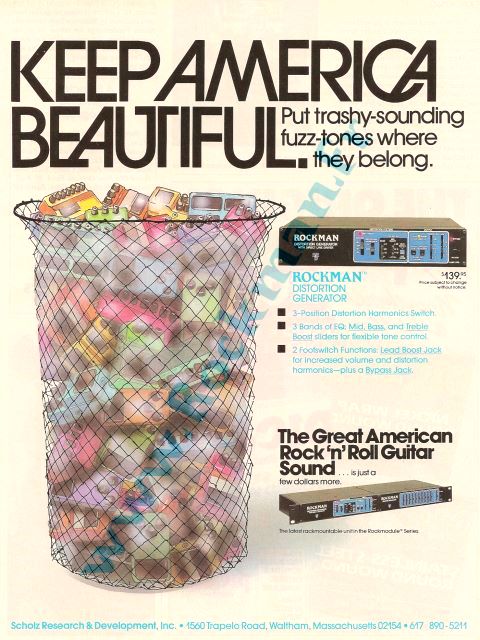The pros and cons of stompboxes and rack units are purely technical and financial. Music has nothing to do here. As a matter of fact, any circuit can be adapted from one to another, even if it’s not always that obvious.
The stompboxes are a “bad habit” inherited from the past. In the sixties, the first guitar-oriented effects were very small circuits that didn’t need a large enclosure: fuzz-boxes and wah’s. The other effects (reverbs and tape echoes) were too big to be mounted in a stompbox format.
Then came the phaser (an electronic imitation of the huge Leslie cabins). The Univibe, certainly the first commercial phaser, was built in a floor-based format: it was, after all, logical to place it side by side with, let’s say, a Vox wah and a Fuzz Face…
As a matter of fact, the question of rack vs stompbox didn’t come a long time ago: the amps had no “effects loop”, so an effect could be placed either between the guitar and the amp, either after the amp, i.e. at the mixer level, after miking the amp. The pre-amp, guitarist-oriented effects were therefore all developed in a stompbox format, while the post-amps effects – flangers, echoes, etc… were more sound-engineer tools than musician devices.
Things have changed in the eighties, when people got better information about their gear, and moreover, when stompboxes became common and available. A flanger or a chorus pedal placed before a saturated amp sounds horrible, for example, and people have learnt this kind of things.
So the principle of an effect loop was created. This loop allows connecting effects after the saturation of… the preamp. Fine when you play a solid-state amp, cause the power amp is linear and is not used for saturation, but it doesn’t really help if you play an old-school tube combo and use the saturation of its power amp!
Anyway, that’s when the question of the stompbox format arrived: if you want to connect your favorite flanger in the loop of your amp, you need one cord from the amp send to your pedal, then another from the pedal to the amp return. Feet and feet of tone-killling cables…
|
 |
OK. Let’s stuff all the electronics in rack units, once for all, and let’s include a remote footswitching for, at least, the bypass function. That’s logical, and it makes sense from a technical point of view. There’s one drawback: cost.
The reason why stompboxes are still alive is that they can be designed – and sold – at an attractive price. It doesn’t mean a stompbox will sound bad: it is of course perfectly possible to build big pedals with high-quality components and a built-in power supply instead of batteries.
Oh yes, batteries… Why are stompboxes used with batteries? Manufacturing cost, one more time! The constraint for a manufacturer today is to create circuits that can be operated with a 9V battery… with all the associated drawbacks.
The following technical details are minor points compared to the long cords issue, but the consequences of battery operation become critical in specific conditions:
- Less available voltage (9V in a stompbox, up to 24V or more in rack units) means more noise, the signal-to-noise ratio being lower.
- Less available voltage means less headroom: most of the stompbox units cannot handle the line-level signals of an effects loop.
- One voltage only, instead of a balanced two voltages power-supply in a rack unit, has consequences on the design of the effect. The biasing technique can, in some specific cases, make the circuit really weird and cumbersome, with degraded performances.
Rockman gear was clearly high-end equipment, so the cost was not an objective. That’s how the decision of making only rack units was made. SR&D actually made two stompboxes before ceasing its activities - the UDG and the AGP – but these two low-cost items were market oriented, and were not designed in the spirit of the original Rockman gear.
|
